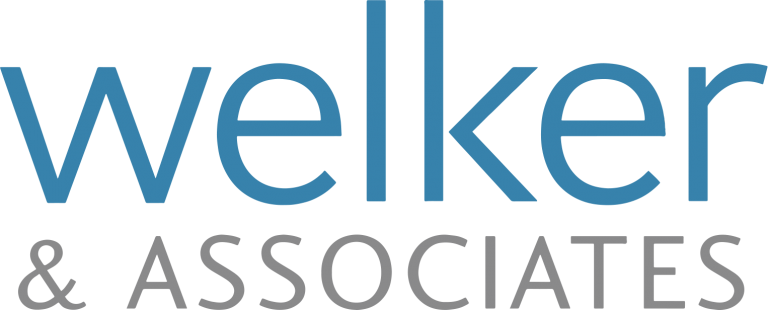Bankruptcy
A legislated process that allows an honest but unfortunate debtor an opportunity to get a fresh start and discharge their debts.
Not sure where to start? - Contact Us Now!
Over the years we have helped thousands of people solve their money problems. No matter how bad your situation, we can help.
Over the years we have helped thousands of people solve their money problems. No matter how bad your situation, we can help.
Filing bankruptcy will help you:
Get a fresh start
Take control of your finances
Stop interest charges
Prevent collection activity
Stop wage garnishment and other legal action
Obtain a discharge (release) of your debts

Consider filing Bankruptcy if you:
- Want to get a fresh start
- Struggle to pay your bills
- Are insolvent (debts > assets)
Key considerations:
- Assets may be affected
- Payments based on income
- Results in worst credit rating
Why choose Welker & Associates:
- Compassionate approach
- Non-judgemental friendly staff
- Experienced and knowledgeable
Ready to get a fresh start?
Find out if bankruptcy is the right option for you.
Any person that is insolvent (debts > assets) and owes more than $1,000 can file bankruptcy.
If you file personal bankruptcy your assets vest with your trustee and become property of your bankrupt estate. However, many assets are exempt or protected from seizure pursuant to provincial or federal legislation. Exempt assets are completely unaffected by bankruptcy. Exemptions vary slightly by province, but in Ontario the most common exemptions are:
$6,600 worth of equity in a car or other personal vehicle.
$13,150 worth of household furniture and appliances.
$11,300 worth of tools of trade (tools used to earn income).
Personal clothing and effects.
Most life insurance policies.
Pensions.
Most RRSP’s.
As trustees, we work with people to find solutions that allow them deal with their debts and have as minimal an affect on their assets and income as possible. That said, if you own assets that do not fall into one of these exempt categories filing personal bankruptcy may not be the best option for you. As part of our assessment process we will explain how each of your assets would be affected if you were to file bankruptcy, and what other options you may have to settle your debt and protect all of your assets.
How your vehicle is affected by personal bankruptcy depends on a couple of factors. There are two scenarios:
Scenario 1: Your vehicle has less than $6,600 of equity:
In Ontario there is an exemption for equity in a vehicle of up to $6,600. Therefore, if you file personal bankruptcy and own a vehicle that has less than $6,600 of equity (value of vehicle less lien) your vehicle is completely exempt from seizure by creditors and will be unaffected if you file personal bankruptcy.
Scenario 2: Your vehicle has more than $6,600 of equity:
If the total equity (value of vehicle less lien) in your vehicle exceeds the $6,600 exemption the portion of your vehicle’s equity that exceeds the exemption would be an asset that your creditors would have an interest in. That said, the fact that your vehicle’s equity is not fully covered by the exemption does not necessarily mean that you would lose your vehicle. It means that you would need to make payment arrangements with the trustee regarding the non-exempt equity or consider other options to settle your debt (ie: consumer proposal).
NOTE: In either scenario if you want to keep your vehicle and there is a lien registered against it you must continue to make your vehicle loan payments. Filing bankruptcy does not affect the rights of secured creditors and if you do not make the required vehicle loan payments the secured creditor can and will repossess your vehicle.
Filing personal bankruptcy does not necessarily mean that you will lose your home. While house equity is an asset that is not protected from creditors in a bankruptcy, many people who file personal bankruptcy are able to keep their homes. Creditors have a right to the money that would come if your home were to be sold, but they don’t care whether that money is paid to them as a result of the sale of your property or through some other payment arrangement.
For example: If you own a home with $25,000 worth of net equity (value of your home less mortgages and selling costs) and decide to file bankruptcy your creditors would have a right to $25,000. Your creditors don’t care whether that $25,000 is paid to them as result of the sale of your property, or if that $25,000 is paid to them through some other payment arrangement you may make with your trustee.
We understand that protecting your home is a top priority, and we will do what we can to help you find solutions to deal with your debt and keep your home. That said, if you own your home filing personal bankruptcy may not be the best option for you. As part of our assessment process we will explain how your home would be affected if you were to file bankruptcy, and what other options you may have to settle your debt and keep your house.
Yes! Despite the fact that filing personal bankruptcy has a negative impact on your credit rating, and that the negative impact will remain on your credit report for some period of time after being discharged from bankruptcy, you can rebuild your credit rating after bankruptcy. Providing advice around how to rebuild your credit rating after bankruptcy is part of the credit counselling services that we provide.
The minimum bankruptcy administration fee for a first-time bankrupt without surplus income (low income) is $1,800. This fee is normally paid at the rate of $200/month for 9 months. For second or third time bankrupts the fees and length of the bankruptcy process are different.
It is important to note that while the minimum bankruptcy administration fee applies in all bankruptcy filings, if you have income above the Superintendent of Bankruptcy’s income guidelines additional “surplus income payments” may be required.
The theory behind surplus income payments is that when you file personal bankruptcy you are no longer required to make any payments directly to your creditors, but if you have a higher income you should be able to pay something.
The calculation of surplus income payments is legislated under the Bankruptcy and Insolvency Act (Directive 11r2) and based on your income relative to the Superintendent of Bankruptcy’s income guidelines. The income guidelines are adjusted annually based on consumer price index and vary depending on the number of people in your family.
When you file bankruptcy you are required to submit monthly income reports to the trustee. These reports are used to calculate the amount of surplus income payable. Since surplus income payments are based on your actual reported income they can vary significantly throughout the bankruptcy process.
Almost all unsecured debt can be included in a bankruptcy, including but not limited to:
- Credit card debt.
- Payday loans.
- Canada Revenue Agency debt.
- Bank loans.
There is a very small list of debts that cannot be included in a bankruptcy. These debts are listed in Section 178 of the Bankruptcy and Insolvency Act and include:
- Traffic fines.
- Court awarded damages related to bodily harm, assault or wrongful death.
- Spousal support.
- Child support.
- Any debt incurred as the result of fraud.
- Government student loan debts (if you have haven’t been out of school for more than 7 years).
Step 1: Meet with a licensed insolvency trustee:
- Review your situation and discuss options.
- Consider how filing personal bankruptcy will affect your assets and income.
- Confirm that filing personal bankruptcy is the right option for you.
Step 2: File the bankruptcy documents:
- Complete and sign the bankruptcy documents with the trustee.
- Register your bankruptcy with the Office of the Superintendent of Bankruptcy.
- Send notice of your bankruptcy to your creditors.
Step 3: Perform required duties and obtain discharge:
- Complete all required duties.
- Make all required payments.
- Obtain discharge from bankruptcy.
The goal of anyone who files bankruptcy is to obtain a discharge. A discharge from bankruptcy means two things; that you have performed all of the required duties and completed the bankruptcy process, and that you are discharged (released) of any future obligations to the creditors that were included in your bankruptcy.
- Attend 2 credit counselling sessions.
- Provide monthly income reports.
- Provide tax information related to the year of bankruptcy, and prior years.
- Pay bankruptcy administration fees and/or surplus income payments, as required.
Bankruptcy results in an R9 (worst) credit rating.
For a first-time bankrupt, the R9 credit rating (worst) stays on the credit report for 7 years after the discharge.
For a second-time bankrupt, the R9 credit rating (worst) stays on the credit report for 14 years after discharge.
Your Credit Report
If you’ve been struggling with money problems for a long time it can be difficult to know where to start. As time passes, debts go into collections and get transferred from one company to another making it hard to keep track of who you owe and how much. Fortunately, we can help. With your permission, Welker & Associates Inc. has the ability to view your TransUnion credit report and help you figure out what you owe. Understanding the full extent of your debt issues is a critical first step in determining the best way forward.
Testimonials
We recently engaged the services of Welker & Associates. We were looking for someone who could help us with our bankruptcy reasonably and fairly. We interviewed several trustees, Welker.ca was by far the most knowledgeable, providing easy to understand scenarios of various options. Welker fit the bill, not only did they help us on time, they saved us lots of money by suggesting cheaper, quicker and more effective alternatives.
Andrew P.
This company is amazing, friendly People, they work with you to put in a payment plan that works for you not them. I went with them and I can now say, I'm Debt Free. They contacted everyone I owed and got what I owed and they got it Cut in Half and then Some. I would Recommend this company and these people to anyone who is falling behind and is Accumulating debt.
Justin Cornelius Horton
I had been overcome by stress for many months not knowing what to do. I wasn't even sure who to talk to about my growing dept. Thankfully I was told about Welker and associates. They came to meet me in Chatham even though they are out of London. The process was easy and the staff was very friendly and reassuring. Thanks to these wonferful people I can get back to my life. Thank you.
Kyle Rose Munroe
I kept telling myself, I've got this, just need another couple weeks to get ahead. It just got me deeper and deeper in a dismal pit of debt. I wanted to give up. I had always thought that you have to try, always just try, so I made one call. That one call left me with something I had not felt in quite a while. Hope. Sue asked me some questions with a sensitivity that was greatly appreciated, she was able to access my situation and was straightforward with what could be done, how and the choices I had. She assured , steered and educated me on my journey to gain control not only on my financial future but my priceless sanity. I am moving forward, I have control, if I slip I can call for guidance.
One of life's great pleasures is coming across someone who is so well suited to their job. Sue is one of these people I have had the pleasure of her experience and knowledge.
S. Sharp
Want more information?
From Our Resource Center
Why is it dangerous to use credit for emergencies?
Recently, a client told me that they’d like to keep one credit...
Read MoreNew Exemption Amounts
You are permitted to keep some assets in a bankruptcy. These exemptions...
Read MorePayday Loans and Christmas Spending
Christmas can often times be a financially daunting time of year for...
Read MoreGet a Free Consultation
Our initial consultations are always no obligation and free of charge. We will answer all of your questions, help you to understand your situation and develop a personalized plan to become debt free.




